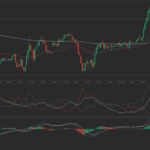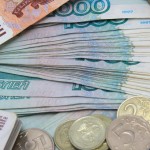 Gold fell to the lowest since early July as a stronger U.S. dollar and a rally in equities limited the metals demand as a safe haven after Iran and six major world powers reached a groundbreaking diplomatic breakthrough in curbing Irans nuclear program in exchange for relief from tough economic sanctions. Investors also awaited the release of crucial U.S. housing and consumer sentiment data to receive further insight of when the Federal Reserve may begin trimming its monthly bond purchases. Silver fell, while platinum rose and palladium was mostly unchanged.
Gold fell to the lowest since early July as a stronger U.S. dollar and a rally in equities limited the metals demand as a safe haven after Iran and six major world powers reached a groundbreaking diplomatic breakthrough in curbing Irans nuclear program in exchange for relief from tough economic sanctions. Investors also awaited the release of crucial U.S. housing and consumer sentiment data to receive further insight of when the Federal Reserve may begin trimming its monthly bond purchases. Silver fell, while platinum rose and palladium was mostly unchanged.
On the Comex division of the New York Mercantile Exchange, gold futures for settlement in February dropped by 1.07% to $1 231.25 per troy ounce by 11:13 GMT. Prices held in range between days high of $1 244.25 and a 4-1/2-month low of $1 227.75 per troy ounce. The precious metal lost less than 0.1% on Friday and settled the week 3.6% lower, the biggest weekly decline in two months.
Gold was pressured as Iran and six major world powers reached an accord on curbing the Persian Gulf nations nuclear program in exchange for a temporary easing of tough sanctions, which sent stocks rallying and limited the precious metals appeal as a store of value.
The temporary deal offers the Persian Gulf nation about $7 billion in relief from sanctions but leaves banking and financial measures standing. The accord grants Iran access to $4.2 billion in oil revenue frozen in foreign banks but the current limitations to the country’s outbound shipments remain unchanged at around 1 million barrels per day. However, the European Union will remove a ban on insurance for tankers carrying Iranian oil, easing the trade between Iran and its six remaining customers, but exports to members of the single currency bloc remained prohibited.
The deal will also provide $400 million in tuition payments to schools for Iranian students who study abroad, give access to civilian aircraft parts and permit the trade in precious metals.
In exchange for the partial lift of sanctions, Iran must improve its cooperation with United Nations monitors by granting nuclear inspectors access to its facilities, eliminate its inventories of uranium enriched to 20% and refrain from bringing online a heavy water reactor at Arak, which will provide the country with a second path to nuclear weapons by producing plutonium.
Chen Min, a precious metals analyst at Jinrui Futures in Shenzhen, commented for CNBC: “Recently, risk-partiality has increased following gains in assets such as equities. We believe that investors will lose interest in gold and rush to risky assets.”
Meanwhile, the relief from sanctions on trading gold with Iran is expected to have little impact on the global market. At 36.9 tons, the Islamic republic accounted for 1.4% of global demand in 2012. There is no big jump in consumption expected as one needs income to buy gold, which in Irans case is limited due to the standing oil export restrictions. The International Monetary Fund expects Irans economy to contract by 1.5% this year after its GDP declined by 1.9% in 2012. Forecasts however called for a 1.3% expansion in 2014.
There is also no significant jump in consumption expected as the Islamic republic has recently been receiving payments in the metal for selling crude oil, petroleum products and natural gas despite the restrictions, signaling there is no lack and extraordinary demand for gold. Imports of bullion from Turkey, a buyer of Iranian natural gas, surged to 126 tons in 2012 from 1 ton in the preceding year.
Fed stimulus outlook
Gold was pressured last week and market sentiment continued to be dominated by speculations the Federal Reserve might begin trimming its quantitative easing program earlier than expected. Last weeks FOMC October meeting protocols revealed the Federal Reserve might begin trimming its quantitative easing program “in the coming months”, if the economic recovery moves in the desired direction. Fed minutes showed that policy makers “generally expected that the data would prove consistent with the committee’s outlook for ongoing improvement in labor market conditions and would thus warrant trimming the pace of purchases in coming months.”
Further weighing on gold, U.S. retail sales jumped by the most since July last month while the Department of Labor reported on Thursday that the number of people who filed for unemployment assistance in the week ended November 16 decreased by 21 000 to reach 323 000, the lowest number since September.
The U.S. dollar index, which measures the greenbacks performance against a basket of six major peers, traded at 80.96 at 11:10 GMT, up 0.33% on the day. Prices shifted in a days range between 80.97 and 80.67. Strengthening of the dollar makes commodities priced in it more expensive for foreign currency holders and limits their appeal as an alternative investment.
Assets in the SPDR Gold Trust, the biggest bullion-backed ETF, fell to 852.21 tons on Friday, the lowest level since the February 2009. Outflows have totaled nearly 455 tons this year. Billionaire hedge-fund manager John Paulson who holds the biggest stake in the SPDR Gold Trust told clients on November 20 that he wouldn’t invest more money in his gold fund because it isn’t clear when inflation will accelerate.
Market players also awaited the release of key U.S. housing and consumer sentiment data later this week to gauge Feds tapering timetable. On Monday, the National Association of Realtors is expected to report that U.S. Pending Home Sales may have risen by 2.0% in October after declining by 5.6% in the previous month.
Data released on Tuesday may show that the number of building permits issued in September and October also advanced, followed by two consecutive gains in housing starts in the respective months. Housing prices are projected to have jumped in September with the S&P/Case-Shiller Composite-20 Home Price Index surging by 12.97% on annual basis, up from 12.82% a month earlier. Meanwhile, the Conference Board will likely report that consumer confidence rose to 72.1 in November following a steep drop to 71.2 in October.
On Wednesday, data by the Labor Department is expected to show that the number of people who filed for initial unemployment benefits rose to 330 000 in the week ended November 23, while durable goods orders probably fell by 1.7% in October. Business activity in Chicago likely slowed in November but remained firmly in the expansion zone, while the Thomson Reuters/University of Michigan Consumer Sentiment Index is projected to confirm the Conference Board’s improvement prediction, marking a surge to 73.1 from October’s 72.0.





